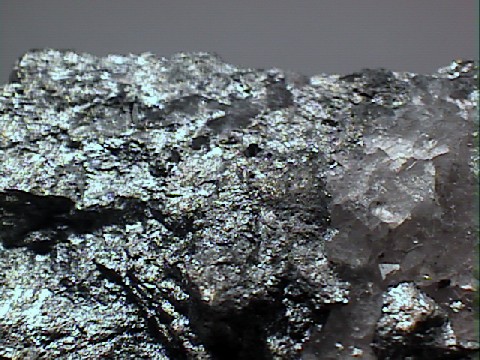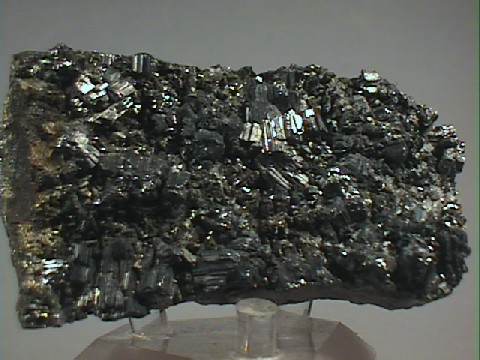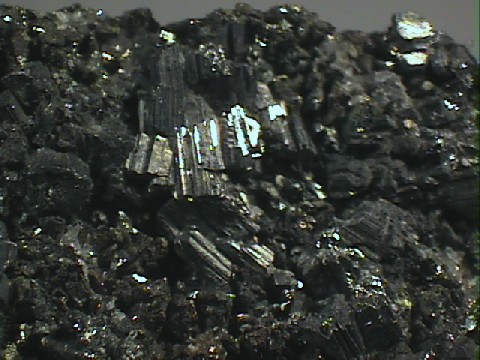 THE
MINERAL SEMSEYITE
THE
MINERAL SEMSEYITE
- Chemistry: Pb9Sb8S21, Lead Antimony Sulfide.
- Class: Sulfides
- Subclass: Sulfosalts
- Group:
Fuloppite - Uses: As mineral specimens and as a very minor ore of lead.
Specimens
Semseyite forms interesting aggregates of intergrown tabular crystals that are rather unique. The mineral is named for an Hungarian mineral collector, A. Semsy. Semseyite is another rare sulfosalt, a segment of sulfides where the antimony acts more like a metal than a non-metal and occupies a position where it is bonded to sulfurs. Semseyite is also one of several lead antimony sulfides, an informal group of similar minerals. Some of these minerals belong to the formal group of minerals known as the
PHYSICAL CHARACTERISTICS:
- Color is gray to black.
- Luster is metallic.
- Transparency: Crystals are opaque.
- Crystal System: Monoclinic; 2/m.
- Crystal Habits include radial to spherical aggregates of tabular nearly parallel crystals.
- Cleavage is perfect in several oblique directions.
- Hardness is 2.5
- Specific Gravity is 5.8 - 6.1 (heavier than average for metallic minerals)
- Streak is black.
- Associated Minerals include quartz, pyrite, stibnite and several other rare sulfosalts.
- Notable Occurrences are limited to the type locality of Baia Sprie, Maramures, Romania as well as the Glendinning Antimony Mine, Glenshanna Burn, Dumfrieshire, Scotland; France and Turkey
- Best Field Indicators are crystal habit, associations, density and cleavage.






